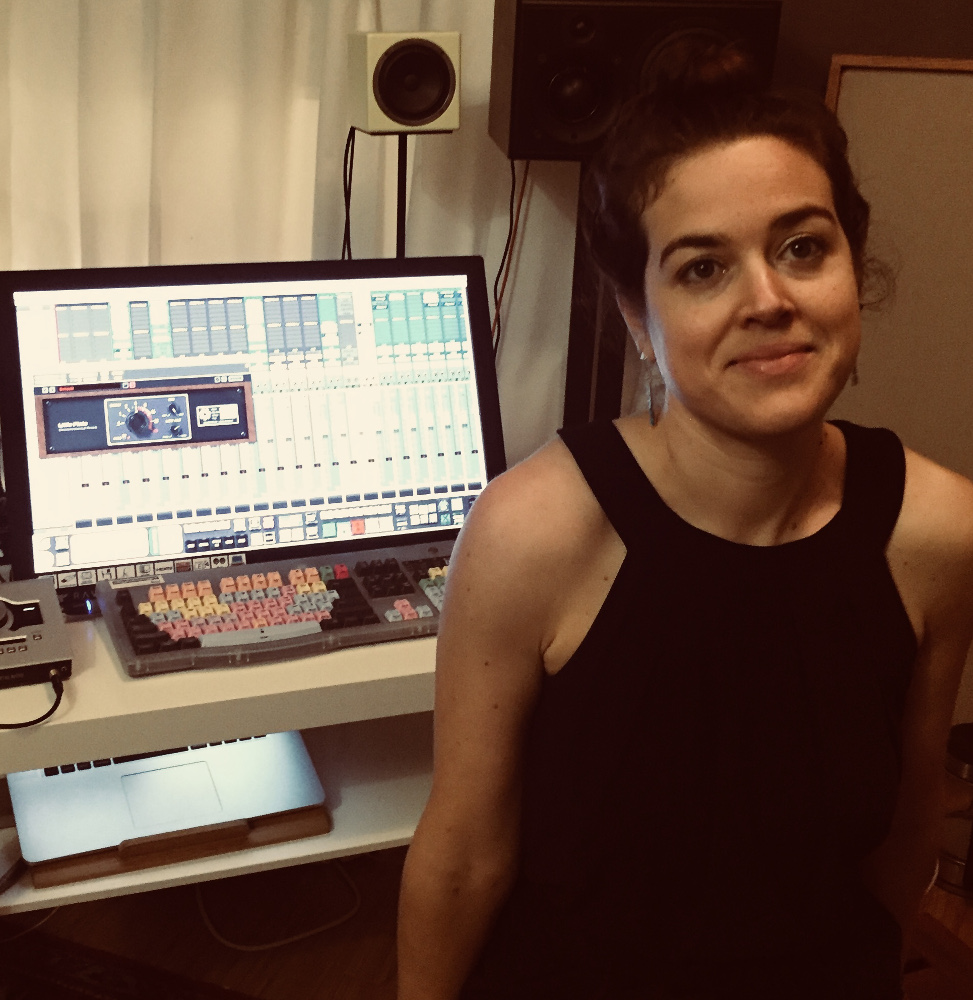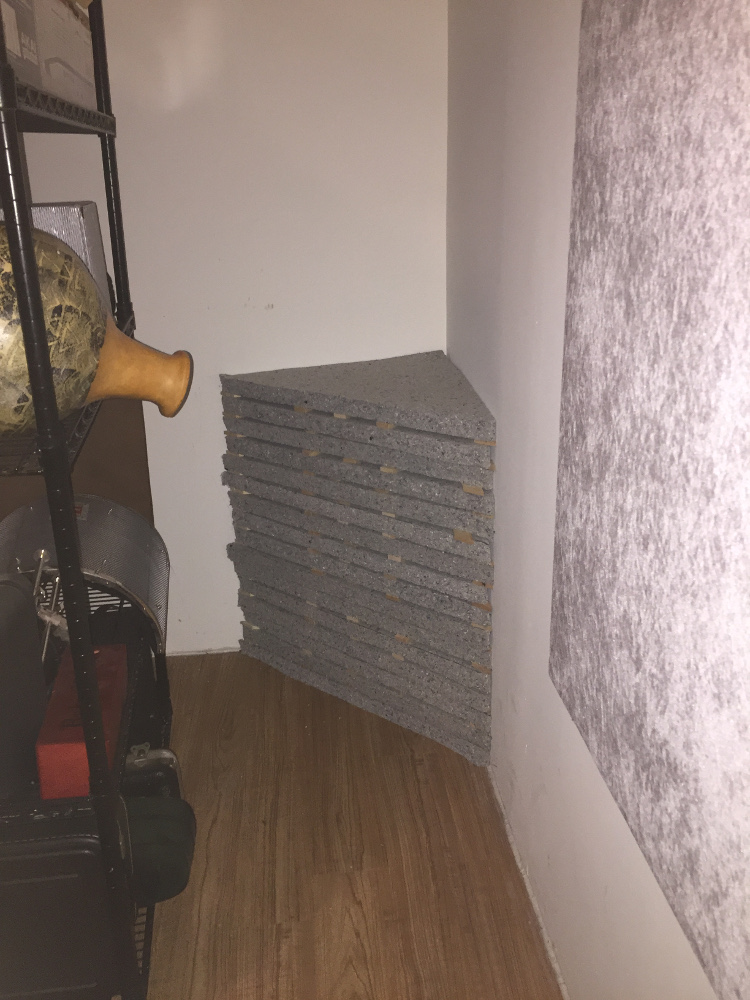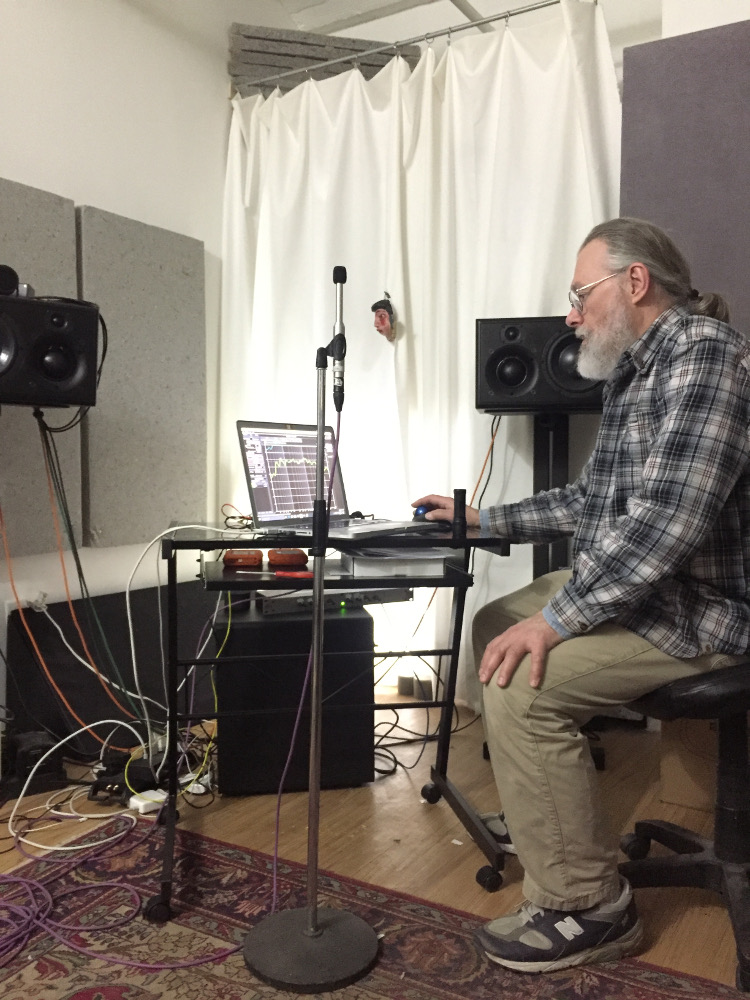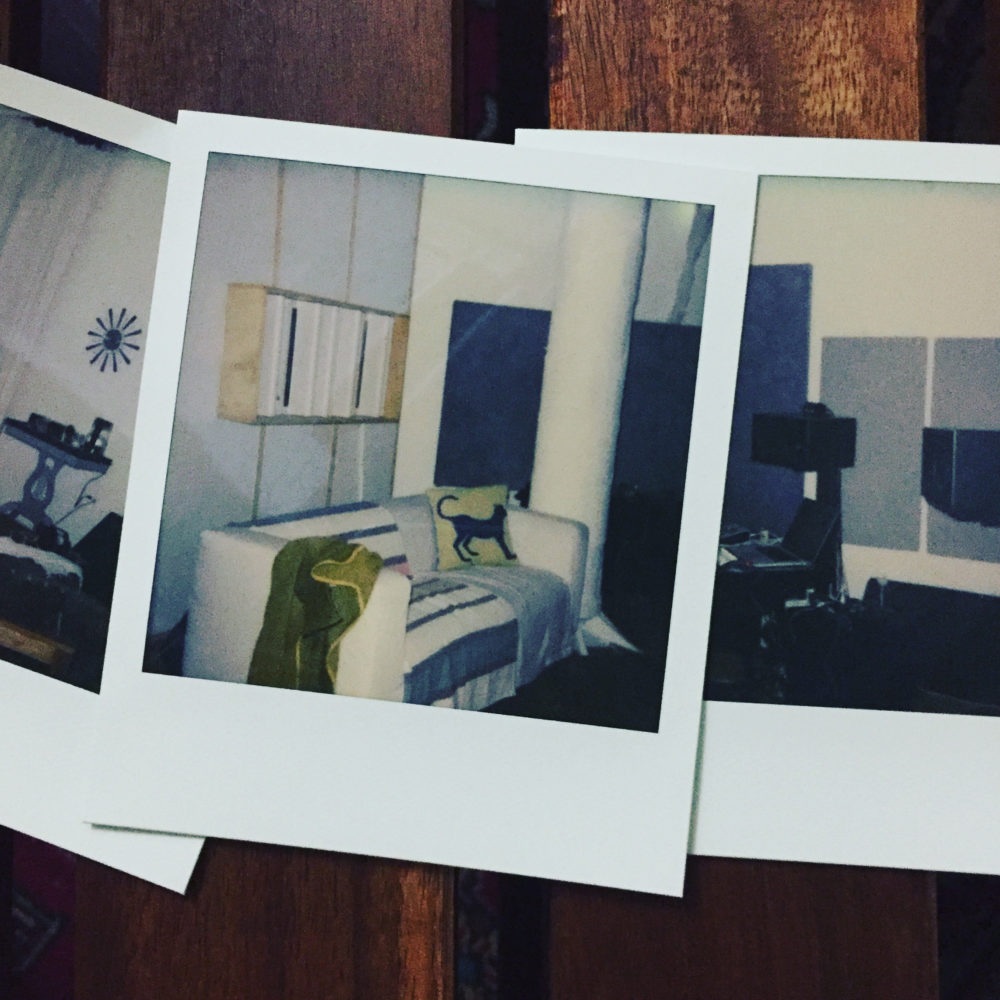Studio Acoustics: Righteous Room Tuning at Alina Chapel
Everything was ideal about the location for mixer Rachel Alina’s studio in DUMBO’s famed Saltlands complex — except the raw acoustics of her room.
Fortunately for Alina, her professional portfolio includes studio design in addition to mixing. She’s also a newly minted Berklee School of Music faculty member, as well as an Art of Mixing instructor for Berklee Online. So when it came time to upgrade the room’s sonic properties, she was ready to tackle the challenge.
Alina details her studio acoustics journey from imperfect shell to a highly accurate critical listening environment. Along with perspective from her acoustician cohort John Chester, prepare to discover a world of wisdom, and several budget-friendly DIY solutions — materials as well as software suites as well as materials — are mixed in with their tips and troubleshooting.
One of the hardest working people in audio, Alina’s acoustic adventure had a positive outcome. Follow along, and your own room just might benefit next.
Facility: Alina Chapel (endearingly named after Rothko Chapel!)
Location: DUMBO, NYC
Date of Birth: October 1st, 2016
My Clients/Credits: Stephen Marley, Rosehardt, Paul Collins, Stella Santana, Brother KAMAU, Alborosie, Mass Gothic, Federico Aubele, Arum Rae, Gloomies, Locals Only, Craig Stickland, Blaise Moore, Mono, Dawn of Midi, Mavis Staples, Joan Osborne, Birdie Busch, Devin Greenwood, P!nk (check out a multitude of Rachel’s mixes here.)
Facility Focus: Mixing
Space and Place Rachel Alina: I chose the space for community and convenience. Community first: a space opened up right across the hall from Signal Corps (Arun Pandian) and around the corner from The Honey Jar (Devin Greenwood). To share a hall with producers and engineers I admire makes me better every day. Getting to know and work with the other producers/musicians in the building, and the fact that it’s in DUMBO has been great too. Convenience second: Signal Corps is my #1 go-to for analog processing, so it’s nice to be just across the hall.
In terms of acoustics: The main advantages of the space is the size. At 18′ x 14′, it’s large enough for a good mix room. The main disadvantage is the shape. The walls are parallel, and – with a pillar and a flat corner in the back – it’s not possible to have a fully symmetrical mix position.
However, the location was too good to not give it a shot.
Plan of (Acoustic) Attack Rachel Alina: I’m looking for a room that is acoustically balanced. I don’t want a listening environment that is hyped in any way, and obviously couldn’t work in a space with significant peaks and dips. Of course a flat room would be ideal, however I don’t expect anything close to that without a full build out.
The first thing I do for any space is call my acoustician, John Chester. Together we moved the speakers around and found a mix location that sounds best. A significant low end issue was immediately noticeable – in that there wasn’t any at mix position. John took some readings from here, and went home to think.
Action! John Chester: First step: Make some corner bass traps. The DIY solution we used was Eco-Core insulation from Acoustimac.com, because it doesn’t shed itchy fibers. 2′ x 4′ x 2″ sheets were cut into four triangles, and these triangles were stacked in the corners, extending out 2 feet along each wall. Airflow resistivity of this material is a little high for this application, so I cut up a bunch of 2×4’s into 1/2″ thick spacers which were inserted between the sheets. In retrospect, I think 1″ spacers would have been better.
I had used this material on another job, and found that it cut quite nicely with a knife blade in a jigsaw. However, this method did not work well on the material that Rachel received. The knife blade quickly got covered with melted black goo, and stopped cutting. The best cutting solution was a Kyocera ceramic kitchen knife, which was very sharp, and didn’t melt the glue because it was moving slowly. Rachel got a lot of exercise cutting insulation….
Corner bass traps didn’t produce nearly enough improvement, so, Step 2: Make a big bass trap on the big 45 degree wall across the back corner. 10’ tall and 7’ feet wide — expensive to treat with manufactured panels. Cheap solution: Lots of fuzz. From back to front: 3.5″ air space, 4″ of Rockwool (formerly Roxul) Safe (4.5 lbs per cubic foot density), 3″ of Rockwool AFB (2.5 pounds per cubic foot density), and acoustic fabric covering from Acoustimac.com (This could have been made with fiberglass, but I hate handling fiberglass. Mineral wool is considerably less offensive.)
Two plastic diffusion panels were hung at the center of this wall, at about the same height as the speakers, to give at least a little bit of midrange and HF reflection.
There were three existing 72” x 48” acoustical panels in the room, consisting of some type of high density fiberglass covered with fabric. They were spaced 2″ off the walls. We relocated two of these to the walls adjacent to the speakers, to absorb initial reflections. The third one is on the right-hand wall adjacent to the door, mostly because that was the only sensible place where it would fit.
Measurements showed that this room has major problems between 70 and 80 Hz. The back wall trap has good absorption down to 70 Hz, and it helped a lot, but still not enough. It’s still suffering from several oblique room modes which are very close together just above 70 Hz. Fixing this problem would require bass traps along a great deal of the wall/ceiling corners, and we have neither time nor budget to do this right now.
Mixes by Rachel Alina:
Room in Tune John Chester: I use AFMG Systune to measure frequency response and hunt for room modes. Room EQ Wizard is also useful, because it provides features such as waterfall plots to show room resonances.
We experimented with small changes in speaker position to improve bass response, and got slight improvement by moving the speakers closer to the walls — but not nearly enough.
So, Plan B: Let’s try a subwoofer. We weren’t planning to use one, but…if it works it will be faster and cheaper than lots more bass traps.
The best location for the subwoofer turns out to be on the floor, slightly forward of the main speakers. Putting it against the wall behind the speakers is not good at all. No high pass filter applied to main speakers. Adjustable low pass filter on subwoofer, with frequency adjusted to get smoothest response through the transition region. Low pass filter frequency is set to almost an octave above the cutoff frequency of the main speakers, because the subwoofer is filling in holes in the main speaker response caused by standing waves.
Of course, standing wave pattern for the subwoofer is different, because it’s in a different location in the room. This provides acceptable response at the sweet spot and, fortunately, at the couch in the rear of the room. The sweet spot is small, and there are lots of places in the room that don’t have great bass, but this will do for a one-person mixing setup.
We added two more plastic diffusion panels near the center of the ceiling. They were hung several inches below the ceiling, and the back was stuffed with leftover scraps of Rockwool AFB. And finally, we added three MondoTraps from RealTraps in the wall/ceiling corners.
Lessons Learned John Chester: Usually, many oblique room modes do not require treatment, because they have only 1/4 the energy of axial modes. Now, I will be more vigilant in detecting oblique modes which are clustered very closely together in frequency.
Aural Outcome Rachel Alina: After all this work, the mix position was balanced across the frequency spectrum — which is quite a feat in this room! I had clarity in the low end and a clear stereo image. It’s comfortable for artists, too: The sound at the sweet spot translates perfectly to the couch. I was admittedly still having an issue though: The stereo image was slightly more narrow than I would like with the proper speaker placement. So the final fix: bring in my old speakers from college placed outside the ATCs. It proved also to be a great reference for my balances, I just know them so well! With that last move, it finally feels like home.
Words to the Wise: If you have the resources to work with an acoustician, that is the number one thing any person can do.
If you’re on your own, start with just a basic listening analysis. Move your speakers around the room listening to music that you’re familiar with. Think about how you’re hearing the bass and the vocal sibilances. Experiment moving the speakers closer and further away from the wall. Once you settle on a place, take the same music you were referencing for placement and listen to it in other places as well (headphones, cars, friends’ apartments, other studios) and just notice the differences. You can also take a decibel reading and run tones just through a signal generator plugin as a quick way to see if there are peaks and dips.
Also, in my experience something to avoid is the mentality that by simply knowing significant issues in the room you can compensate for it in the mix. You have to enjoy listening to music in your room to mix in it! If something’s wonky have the courage to admit it. Where there’s a will, there’s a way — just put in the work (with an open mind!) and you’ll get there.
The Most Mega Mix Rachel Alina: Truly, in all honesty: Every mix I do is my most mega mix. I’m just so thankful to work with artists and producers on their music. I understand what it’s like to be a creative person and hand a project off to someone outside of yourself for the final stage. It’s an honor to be that person.
That said, I do like dream worlds…and I would very much so like to work The Beatles. And Beyoncé.
Please note: When you buy products through links on this page, we may earn an affiliate commission.











